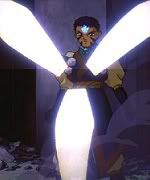Post by Brilenus on Jan 20, 2008 9:09:59 GMT -5
Many people have problems with basic programming, and nearly as many have problems with creating simple orbs of energy - what they call psiballs. I have come across a few things in my experimentations that might help some of these people.
To begin with, it is not a psiball, it is simply an orb of energy. Energy is all around us, and can be manipulated just as you manipulate your body itself. This fact means that you can "reach out" and manipulate the energy flow around yourself. With this ability, it is possible to either pull energy out of yourself, or in from the environment. If you draw this energy into one spot, it is quite easy to cause it to form an orb, as it has a tendency to stick together with energy of the same type.
When you manipulate energy, all you are really doing is programming it to do something. If you try to move energy, you are programming it to go to a location, and then to wait for further instructions. This is what messes most people up. They assume that programming is different from manipulation. This also leads to confusion about "Shelling" - something that is not truly required.
People try to "shell" their energy by making the outer layer more dense than the inside in an attempt to make the energy stay together and resist dissipating. All this really does is form a weak shield around everything they do. What is more important is to understand that the energy is being controlled by your will. If you tell it to stay together, and you don't have conflicting thoughts that it will fall apart - it will stay together just fine.
Due to this, a psiball/orb of energy also classifies as a construct, though most do not see it that way. What most consider to be a construct is a collection of energy programmed to do one or more specific things besides stay together.
In addition, there are many ways of programming constructs. Above, I have talked about the method called "Conceptual Programming" - programming by imposing your will upon the energy while thinking that it should do certain things, thus imprinting that effect onto the energy. Most people use a very limited form called "Visualization" - trying to picture what the energy will do while connected to it. This results in only being able to program things that you can see in your imagination. The conceptual form allows you to do things, even if you don't know how they would look. That allows for a far greater amount of possibilities while programming.
For an example, try programming a shield to do the same thing with both methods. Create an eight foot across sphere, make it act like rubber, with a mirror coating over it, absorb things that get past the mirror, slow them down, and regulate your energy going in/out. It is much easier for most people to simply think what it should do than visualize it, especially once you get into the more complex constructs.
Personally, I have never been able to visualize, and thus, I found conceptual programming to be the only way for me to do things. When I shared it with a few friends, they said it worked much better than visualizing, thus I am sharing it here.
As a side note: It is incredibly hard to create AI with visualization. If you wish to do that sort of construct programming, you may want to learn conceptual programming, even if visualization normally works best for you.
To begin with, it is not a psiball, it is simply an orb of energy. Energy is all around us, and can be manipulated just as you manipulate your body itself. This fact means that you can "reach out" and manipulate the energy flow around yourself. With this ability, it is possible to either pull energy out of yourself, or in from the environment. If you draw this energy into one spot, it is quite easy to cause it to form an orb, as it has a tendency to stick together with energy of the same type.
When you manipulate energy, all you are really doing is programming it to do something. If you try to move energy, you are programming it to go to a location, and then to wait for further instructions. This is what messes most people up. They assume that programming is different from manipulation. This also leads to confusion about "Shelling" - something that is not truly required.
People try to "shell" their energy by making the outer layer more dense than the inside in an attempt to make the energy stay together and resist dissipating. All this really does is form a weak shield around everything they do. What is more important is to understand that the energy is being controlled by your will. If you tell it to stay together, and you don't have conflicting thoughts that it will fall apart - it will stay together just fine.
Due to this, a psiball/orb of energy also classifies as a construct, though most do not see it that way. What most consider to be a construct is a collection of energy programmed to do one or more specific things besides stay together.
In addition, there are many ways of programming constructs. Above, I have talked about the method called "Conceptual Programming" - programming by imposing your will upon the energy while thinking that it should do certain things, thus imprinting that effect onto the energy. Most people use a very limited form called "Visualization" - trying to picture what the energy will do while connected to it. This results in only being able to program things that you can see in your imagination. The conceptual form allows you to do things, even if you don't know how they would look. That allows for a far greater amount of possibilities while programming.
For an example, try programming a shield to do the same thing with both methods. Create an eight foot across sphere, make it act like rubber, with a mirror coating over it, absorb things that get past the mirror, slow them down, and regulate your energy going in/out. It is much easier for most people to simply think what it should do than visualize it, especially once you get into the more complex constructs.
Personally, I have never been able to visualize, and thus, I found conceptual programming to be the only way for me to do things. When I shared it with a few friends, they said it worked much better than visualizing, thus I am sharing it here.
As a side note: It is incredibly hard to create AI with visualization. If you wish to do that sort of construct programming, you may want to learn conceptual programming, even if visualization normally works best for you.






 lol I all ways use visualization because I can visualize really good,but I guess I can try some thing new.
lol I all ways use visualization because I can visualize really good,but I guess I can try some thing new.  nice article by the way
nice article by the way




 . This has offered some excellent information and a slightly different angle.
. This has offered some excellent information and a slightly different angle.


